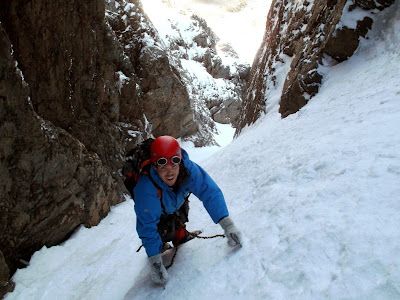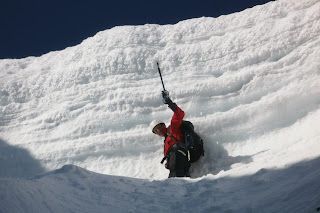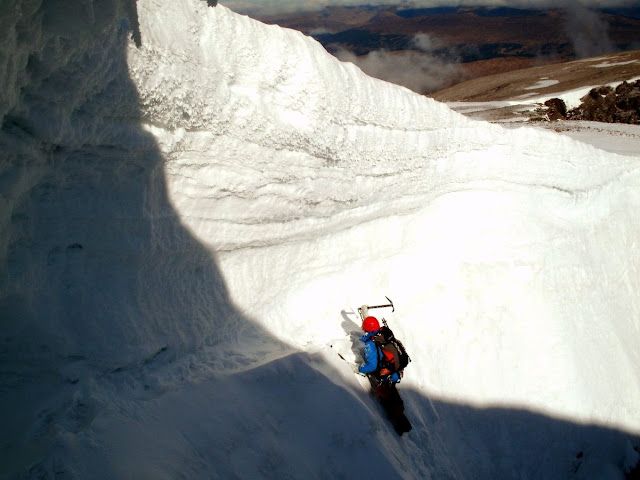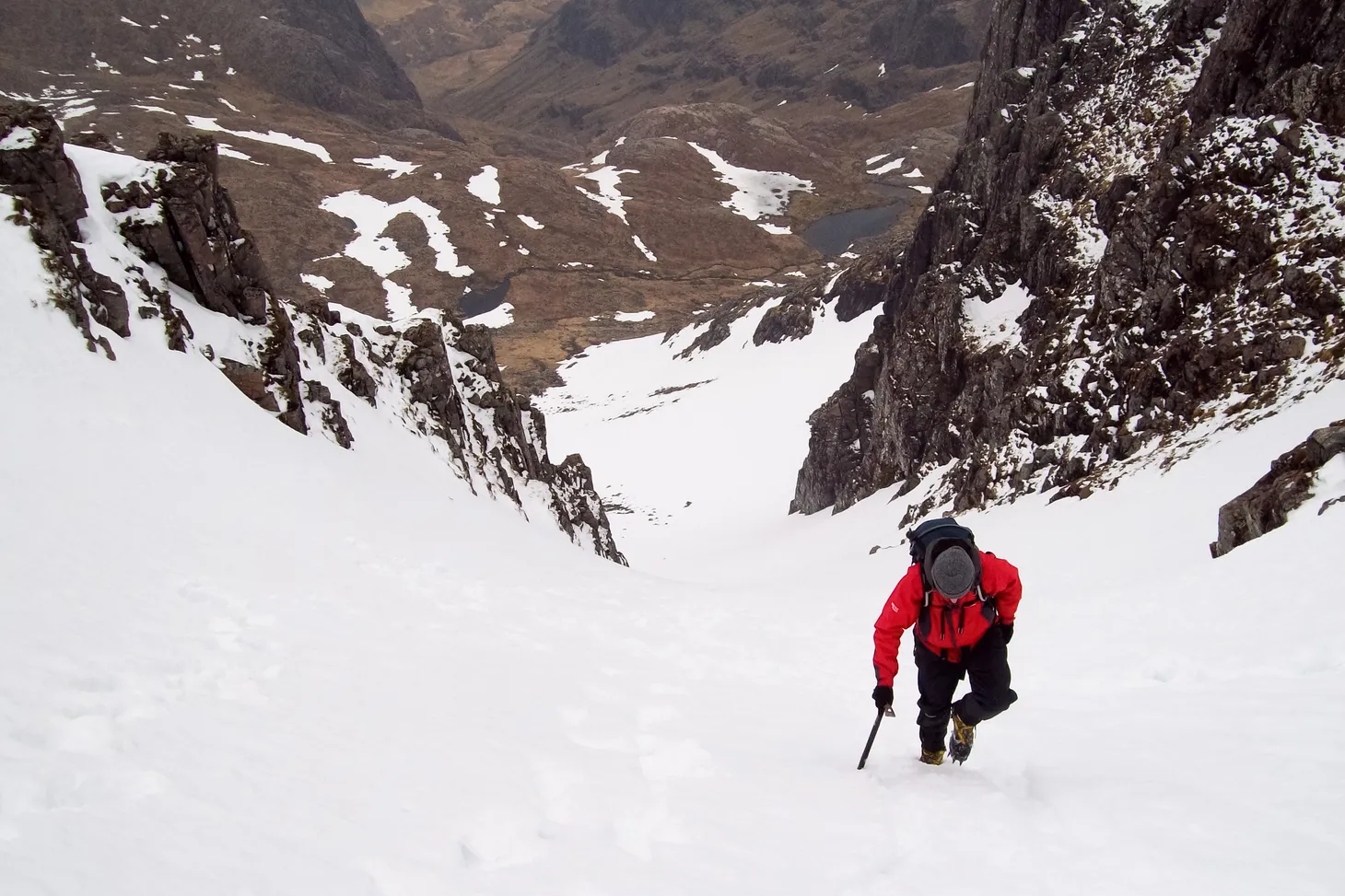This blog post is part of a series of articles on mountains that have a special significance for me. See also: Bowfell, Tryfan, Stob Ban, Castor, and Aonach Dubh.
Like most people, I first climbed Ben Nevis via the Pony Track: a relentless grind up the bleak western flanks of the mountain. It was only my second visit to Scotland, in September 2006. I had only climbed a handful of Munros to date, but I was ambitious and impatient to build up my mountaineering credentials,. Ben Nevis seemed like the natural choice.
I was staying in Glen Nevis and had just ticked off the Ring of Steall in a two day lightweight bivvying expedition. Blisters plagued me and the forecast was terrible, but undeterred I crossed the River Nevis at Achintee and set forth on the adventure. The Pony Track is an unrelenting grind up a stony zig-zag. The difficulty of the walking is very low, but it goes on and on; even on a fine day, it’s unlikely to be memorable for aesthetic reasons. People climb the Pony Track simply to get to the highest point of the UK. It’s far more useful to climbers as a quick way down.
 |
| A gap in the cloud |
I got to the summit in thick mist, saw a lot of stones, and thought to myself that Ben Nevis wasn’t that good a mountain after all. I naively thought I had ‘done’ Ben Nevis, but as I would come to appreciate over the next few years, I had seen only a tiny proportion of this grand mountain.
~ FIRST EXPERIENCE OF THE NORTH FACE ~
 |
| James climbing the lower steps of Castle Ridge |
By early 2008, James and I were getting into more serious climbing and we decided to revisit Ben Nevis. Our trip coincided with some grand conditions on the North Face and we selected Castle Ridge as our first route. At the time we had some experience on Grade II climbs but had never attempted a III before. Castle Ridge would be our first.
 |
| Me belaying above the crux |
We were fortunate to find the ridge in benign condition: a thick lathering of powder on top of old, firm neve, and the rocks largely free of rime ice. However, several sections were quite difficult and I climbed the infamous crux chimneys after a committing battle. Nowadays this section is frequently given a technical grade of 4 and Castle Ridge has a reputation as a ‘cruxy’ III. Nevertheless, both of us managed to heave ourselves over this fierce obstacle. The rest of the ridge was easy.
~ LEDGE ROUTE ~
I had previously scrambled up Ledge Route (the easiest climb on the North Face) in summer 2008 with the UEA Fell Club, and was keen to try the route out in winter conditions. It’s one of the best Grade II climbs in Scotland and frequently soloed. At that time I hadn’t done much soloing in winter, but headed up there in the first week of December with my bivvy bag. It snowed heavily overnight (waking up was certainly uncomfortable!) and getting to the start of the route required a bit of a wade.
 |
| Post-route photo. At that time I climbed in a ragged old garment which became known as the “Death Smock.” It wasn’t waterproof but it was very lightweight! |
Ledge Route became a favourite, and in 2009, 2010 and 2011 I managed to climb it after the first snowfall of the winter (usually October).
~ THE CMD ARETE ~
 |
| May 2009 |
Ask any ambitious mountain walker which is the best way up Ben Nevis, and 9 out of 10 will tell you it’s the CMD Arete. This shapely ridge connects Ben Nevis with the peak of Carn Mor Dearg and provides a link with the chain stretching east to the Grey Corries. The route is technically easy but has a distinctive elegance and is a coveted route for aspiring mountaineers.
I first traversed the arete on a beautiful morning in May 2009. The previous day I had bivouacked in the huge corrie east of Aonach Beag, and in the early hours I climbed a Grade III ice route on the immense North Face: perfect ice and deep snow, but with the constant risk of avalanche in the rapidly warming conditions. From Aonach Beag I made my way over to Carn Mor Dearg and paced out the arete before crossing the summit of Ben Nevis and making my way back down to Glen Nevis. It was an unforgettable journey, made more special by the unusually good late winter conditions.
The view of the Ben’s North Face from the arete is unsurpassed from any other viewpoint. In this photo you can get an idea of the sheer scale of this wall.
I went back and crossed the CMD Arete for a second time in November 2009 with my friend and fellow wanderer Isi Oakley. Conditions were very different that day – more atmospheric, less Alpine. The sunset from the summit was sheer magic and I have never seen light like it before or since.
~ THE GREAT RIDGES OF NEVIS ~
The Ben’s North Face throws down a brace of ridges into the corrie beneath, several of which are steeped in legend and mystique. By summer 2009 I had already climbed the lesser two of these ridges (Ledge Route and Castle Ridge) but three remained: the world famous Tower Ridge, the gigantic North East Buttress, and the relatively obscure but technically challenging Observatory Ridge. That summer I would tick off two of these ridges.
 |
| Me beneath the final tower |
Winter still gripped the cliffs, but reports indicated most of the snow had gone from Tower Ridge. Isi and I opted for a lightweight approach: we took only a 100ft rope and no technical equipment, although I opted for rigid boots and a long ice axe in case any steps needed to be cut. Most of the ridge was indeed bare rock, although the cave pitch was filled up with hard ice that needed to be cut to allow a through passage.
 |
| Isi in Tower Gap |
These were the days before the Tower Gap rockfall and we negotiated this infamous obstacle with relative ease. Nowadays a block has been detached which makes descending into the Gap more difficult.
Once again we topped out to stunning views over the mountains of Lochaber, and descended at speed. We reached Glen Nevis before 11am – a truly fast and light expedition!
James and I returned to tackle the North East Buttress
a few weeks later. This ridge is quite a bit longer and harder than Tower Ridge, and thanks to its lower level of traffic maintains a slightly wilder feel. On Tower Ridge the right way is rarely in doubt; on NE Buttress a labyrinth of possible routes stretches out ahead of the climber, and the hard bits are much harder!
 |
| The gargantuan outline of NE Buttress, one of the biggest rock climbs in the UK |
We wasted a lot of time just trying to find the First Platform, hidden behind the back of the ridge, but once we found the start of the route we made good time.
 |
| James changing footwear at the First Platform |
 |
| “Es geht?” |
I enjoyed the NE Buttress tremendously. Although we took more modern kit and pitched more of the route, it felt like a good old-fashioned rock climb: noble, defined, and ending at a major summit. The difficulties were testing but not too dangerous, and famous pitches such as the Mantrap and the 40 Foot Corner lived up to their reputations. I found myself incapable of surmounting the Mantrap and was forced to avoid it by a dodge to the right.
 |
| The 40 Foot Corner |
~ FURTHER TRIPS TO THE BEN IN WINTER ~
I never climbed on Ben Nevis again in summer, but returned several times in the winter months to sample the almost limitless possibilities for ice climbing contained within the various corries of the North Face.
Over the years I climbed South and North Gullies, failed on Raeburn’s Easy Route thanks to windslab, and enjoyed yet another unforgettable climb on No.2 Gully in May 2010. I’ll let the pictures speak for themselves. Ben Nevis has always given me quality days out, and even when the weather gods decline to provide the coveted blue skies and sparking ice, the atmosphere of the cliffs never fails to inspire awe.
 |
| South Gully (III) |
 |
| North Gully (II) |
 |
| No.2 Gully (II) |
 |
| Raeburn’s Easy Route (II) |
 |
| Ledge Route in October conditions |
 |
| No.2 Gully in May |
 |
| The monster cornice of No.2 Gully |
 |
| The author about to face the cornice pitch |
So there you have it. I have climbed on Ben Nevis many times over the years and it remains a favourite mountain, but it’s obvious to any climber that I have only just scratched the surface of the climbing potential on these cliffs. I have yet to climb Observatory Ridge, or any of the classic ice gullies, and I think that’s what is truly special about this mountain: there is always more to do and look forward to, regardless of your grade.































